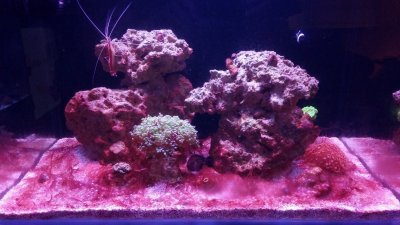- Joined
- Dec 28, 2016
- Messages
- 22,909
- Reaction score
- 22,025
I´m not sure about this because you can always find this type of cyanobacteria in water samples without mats. And as the quote stated - about the role of excretions - its a well-known mechanism among benthic cyanobacteria.
But I will go further with this - I have a friend that´s doing her PhD thesis on cyanobacteria - time for a phone call
Hans-Werner - I do know very well your experiences and the huge impact you have done in the field of having stony corals in aquaria. To paraphrase poor American detective stories - I have figure out your surname
I do not discuss in disrespect - I discuss in order to learn and in order to put in my experiences into the discussion. The good things is that forum like this unite people with different experiences and different specialities and even in this field diversity is important and there can bee perspectives that have been overseen in the past.
As an example - then I first met David back in 2009 he was in the zero stage according how to handle NO3 and PO4. Everything else was ridiculous. However - his experiences during these years have get him to change his mind according to the best husbandry for the aquarias. And they are good - among the best I have seen and the goal for the rebuilding of Sjöfartsmuseet akvariet is humble - to create the best coral aquarium in the world.
After the invention of small blue bottles back in the 90:ties - the zero approach has been dominated for ALL coral husbandry. There has been a backslash to this the last years because it can create instable aquariums. Aquarium is not nature - it is its own ecosystem - with is own solutions.
As an example - we use organic carbon additives - how often do you pull vodka, vinegar or sugar over a natural reef? We use GFO – how often do you see this in nature?
Is it the whole truth that NO3 may not be good for corals – probably for some – but the theses that you linked to conclude that they had not seen any correlation with bad growth caused of NO3 in clams (chapter 5) , hence there are differences between organisms
According to phosphorus concentrations and coral health - IMO - you are totally right in your claims. I have run an aquaria with 1.45 mg/l in PO4 - with good thriving stony corals - I´m notorious for this in Sweden
However - I run my current aquaria with 0.05-0.1 ppm PO4 ande 0.5-10 ppm NO3
Sincerely Lasse
There are also forms of other bacteria that tend to form 'biofilm' and 'slime' - while others of the same species do not (mucoid vs non-mucoid pseudomonas strains for example). Which could explain why some cyanobacteria strains produce mats and others do not





















